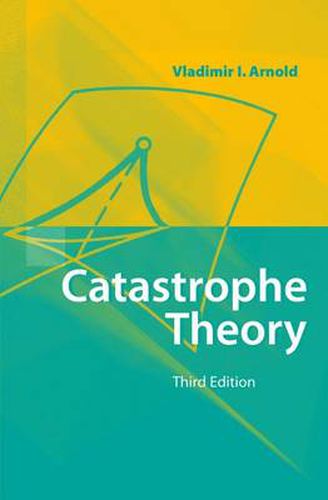Readings Newsletter
Become a Readings Member to make your shopping experience even easier.
Sign in or sign up for free!
You’re not far away from qualifying for FREE standard shipping within Australia
You’ve qualified for FREE standard shipping within Australia
The cart is loading…






This title is printed to order. This book may have been self-published. If so, we cannot guarantee the quality of the content. In the main most books will have gone through the editing process however some may not. We therefore suggest that you be aware of this before ordering this book. If in doubt check either the author or publisher’s details as we are unable to accept any returns unless they are faulty. Please contact us if you have any questions.
This well-known booklet, now in its third, expanded edition, provides an informal survey of applications of singularity theory in a wide range of areas. Although the first few chapters touch briefly (and critically) on theThom-Zeeman catastrophe theory, most of the book is concerned with more recent and less controversial aspects, covering such topics as: bifurcations and stability loss, wavefront propagation, the distribution of matter in the universe, optimization and control problems, visible contours,bypassing an obstacle, symplectic and contact geometry, complex singularities, and the surprising connections between singularities and widely disparate mathematical objects such as regular polyhedra and reflection groups. Readers familiar with the previous editions will find much that is new. Results have been brought up to date, and among the new or expanded topics discussed are delayed loss of stability, cascades of period doublings and triplings, shock waves, implicit differential equationsand folded singularities, interior scattering, and more. Three new sections give an overview of the history of singularity theory and its applications from Leonardo da Vinci to modern times, a discussion of perestroika in terms of the theory of metamorphoses, and a list of 93 problems touching on most of the subject matter in the book. The text is enhanced by fifteen new drawings (there are now 87 in all) and improvements to old ones. The already extensive literature list has been updated and expanded. As a result, the book has been enlarged by almost a third. Arnol’d’s goal with this edition remains the same: to explain the essence of the results and applications to readers having a minimal mathematical background. All that he asks, is that the reader have an inquiring mind.
$9.00 standard shipping within Australia
FREE standard shipping within Australia for orders over $100.00
Express & International shipping calculated at checkout
This title is printed to order. This book may have been self-published. If so, we cannot guarantee the quality of the content. In the main most books will have gone through the editing process however some may not. We therefore suggest that you be aware of this before ordering this book. If in doubt check either the author or publisher’s details as we are unable to accept any returns unless they are faulty. Please contact us if you have any questions.
This well-known booklet, now in its third, expanded edition, provides an informal survey of applications of singularity theory in a wide range of areas. Although the first few chapters touch briefly (and critically) on theThom-Zeeman catastrophe theory, most of the book is concerned with more recent and less controversial aspects, covering such topics as: bifurcations and stability loss, wavefront propagation, the distribution of matter in the universe, optimization and control problems, visible contours,bypassing an obstacle, symplectic and contact geometry, complex singularities, and the surprising connections between singularities and widely disparate mathematical objects such as regular polyhedra and reflection groups. Readers familiar with the previous editions will find much that is new. Results have been brought up to date, and among the new or expanded topics discussed are delayed loss of stability, cascades of period doublings and triplings, shock waves, implicit differential equationsand folded singularities, interior scattering, and more. Three new sections give an overview of the history of singularity theory and its applications from Leonardo da Vinci to modern times, a discussion of perestroika in terms of the theory of metamorphoses, and a list of 93 problems touching on most of the subject matter in the book. The text is enhanced by fifteen new drawings (there are now 87 in all) and improvements to old ones. The already extensive literature list has been updated and expanded. As a result, the book has been enlarged by almost a third. Arnol’d’s goal with this edition remains the same: to explain the essence of the results and applications to readers having a minimal mathematical background. All that he asks, is that the reader have an inquiring mind.